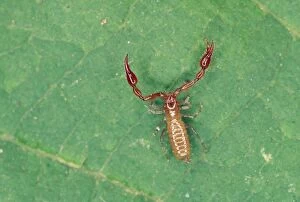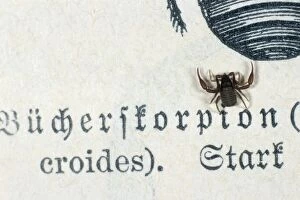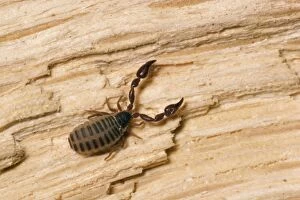Pseudoscorpion Collection
The pseudoscorpion, scientifically known as Chelifer cancroides, belongs to the fascinating order of arachnids
All Professionally Made to Order for Quick Shipping
The pseudoscorpion, scientifically known as Chelifer cancroides, belongs to the fascinating order of arachnids. Despite its name, this tiny creature is not a true scorpion but shares some similarities with both octopuses and insects. In an intricate illustration representing an ecosystem on a tree trunk, the pseudoscorpion takes its place alongside other intriguing creatures such as the Spider Ectobius lividus, Dipluran Acarine, Burying Beetle, Centipede, Myriapod, Common pill-bug, Symphylan, Common earthworm, Snail, Pauropod and Ants. Together they form a complex web of life. Fossils have revealed that these remarkable creatures have been around for millions of years. A Baltic amber fossil C016 / 5161 perfectly preserves the image of a pseudoscorpion from ancient times. This rare find offers us a glimpse into their existence in prehistoric eras. But they are not just relics trapped in amber; they can be found thriving in leaf litter across various regions including the UK. Their ability to adapt and survive in different environments showcases their resilience and evolutionary success. One cannot help but marvel at another stunning discovery - multiple pseudoscorpions encased within Baltic amber. These golden gems capture these arachnids frozen in time like precious jewels locked away for centuries. Even today on Socotra Island in Yemen during March when nature awakens after winter slumber two adult Withius sp. , facing each other create an enchanting scene worthy of admiration. The world of pseudoscorpions is one filled with wonder and intrigue. From their unique appearance resembling miniature scorpions without tails to their diverse habitats spanning from forests to ambers – these incredible creatures continue to captivate our imagination while reminding us how vast and diverse our natural world truly is.











